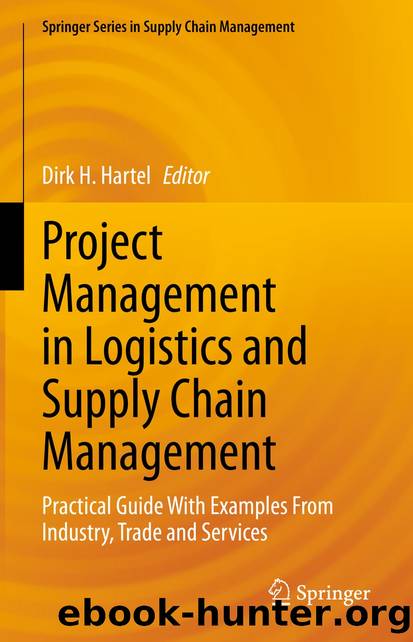Project Management in Logistics and Supply Chain Management by Unknown

Author:Unknown
Language: eng
Format: epub
ISBN: 9783658358822
Publisher: Springer Fachmedien Wiesbaden
The situation at the loading and unloading ramps in the logistics centers of industry and, in particular, the retail sector has been subject to reporting in the trade press for several years. In a survey conducted by SCI Verkehr as part of the logistics barometer in 2016, two-thirds of transport service providers surveyed stated that they have to wait at least one hour on average. One in five even puts the waiting times of more than two hours (Lauenroth & Semmann, 2016).
According to a 2018 survey by Federal Office for Freight Transport (Federal Office for Freight Transport, 2018), 46.7% of drivers surveyed even said that waiting times had increased on an average in the past 5 years, with only 15.4% noting an improvement. Among ramp operators surveyed, the picture was opposite. Only 16.3% spoke of longer waiting time 43.0% of them being shorter. Since waiting times mean a high degree of wasted capacity and ultimately drive up logistics costs, many industrial and retail companies are trying to improve processes at the loading bay with the help of digitalization. Time window management systems are used, which primarily equalize the time peaks.
As the study of BAG (German Federal Office of Goods transportation) shows, this approach does not solve all the problems. The time slot systems can be improved by not only booking a slot at the ramp, but also by booking loading staff and/or loading equipment at the same time. Another improvement of this approach is to make the systems more dynamic. For example, by using position data from the vehicle or an estimated time of arrival to update the time slots to the minute. A cumulative total of around 60.8% of the drivers surveyed and 59.5% of the ramp operators stated that information about the estimated time of arrival of vehicles never or rarely flowed. Some companies are now taking advantage of these dialogue opportunities with truck drivers and assigning ramps or waiting positions to drivers via messaging. Geofencing is also being used by some companies. A plant of a large automobile manufacturer in southern Germany monitors just-in-time transport in this way. If the truck reaches within a pre-specified distance from the plant, the dispatcher is automatically notified. The dispatcher then sends an SMS to driver, directing him to correct plant gate and unloading ramp.
Loading control projects at large chemical plants have been very successful, with more than 2000 trucks being routed to several hundred loading points where they are loaded and unloaded in predefined slots. The BASF site in Ludwigshafen, for example, created cost savings of ten million EURO annually with such a concept (Backhaus et al., 2017).
Download
This site does not store any files on its server. We only index and link to content provided by other sites. Please contact the content providers to delete copyright contents if any and email us, we'll remove relevant links or contents immediately.
Bad Blood by John Carreyrou(5791)
Principles: Life and Work by Ray Dalio(5342)
Rich Dad Poor Dad by Robert T. Kiyosaki(5175)
Management Strategies for the Cloud Revolution: How Cloud Computing Is Transforming Business and Why You Can't Afford to Be Left Behind by Charles Babcock(4141)
The Confidence Code by Katty Kay(3580)
Thinking in Bets by Annie Duke(3545)
Playing to Win_ How Strategy Really Works by A.G. Lafley & Roger L. Martin(3071)
American Kingpin by Nick Bilton(2989)
Delivering Happiness by Tony Hsieh(2932)
Project Animal Farm: An Accidental Journey into the Secret World of Farming and the Truth About Our Food by Sonia Faruqi(2668)
Brotopia by Emily Chang(2598)
I Live in the Future & Here's How It Works by Nick Bilton(2536)
Mastering Bitcoin: Programming the Open Blockchain by Andreas M. Antonopoulos(2525)
The Power of Habit by Charles Duhigg(2502)
The Content Trap by Bharat Anand(2499)
The Marketing Plan Handbook: Develop Big-Picture Marketing Plans for Pennies on the Dollar by Robert W. Bly(2423)
The Tyranny of Metrics by Jerry Z. Muller(2413)
Building a StoryBrand by Donald Miller(2372)
Applied Empathy by Michael Ventura(2337)
